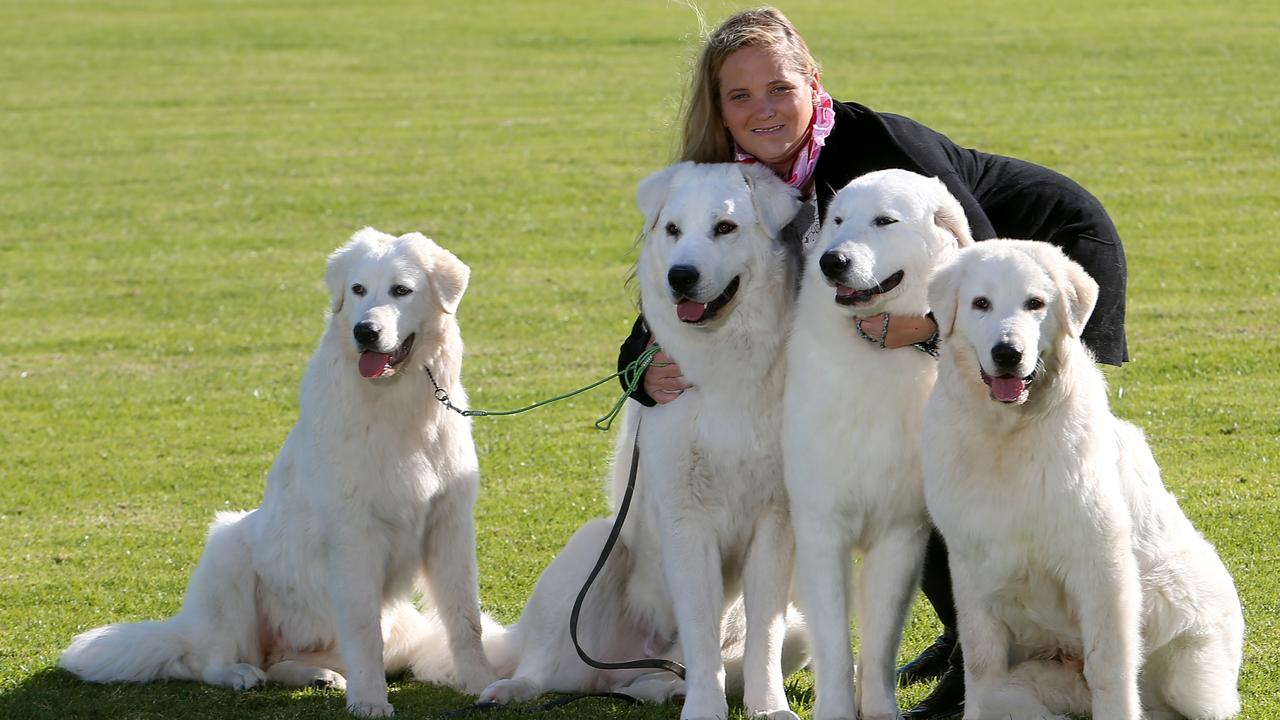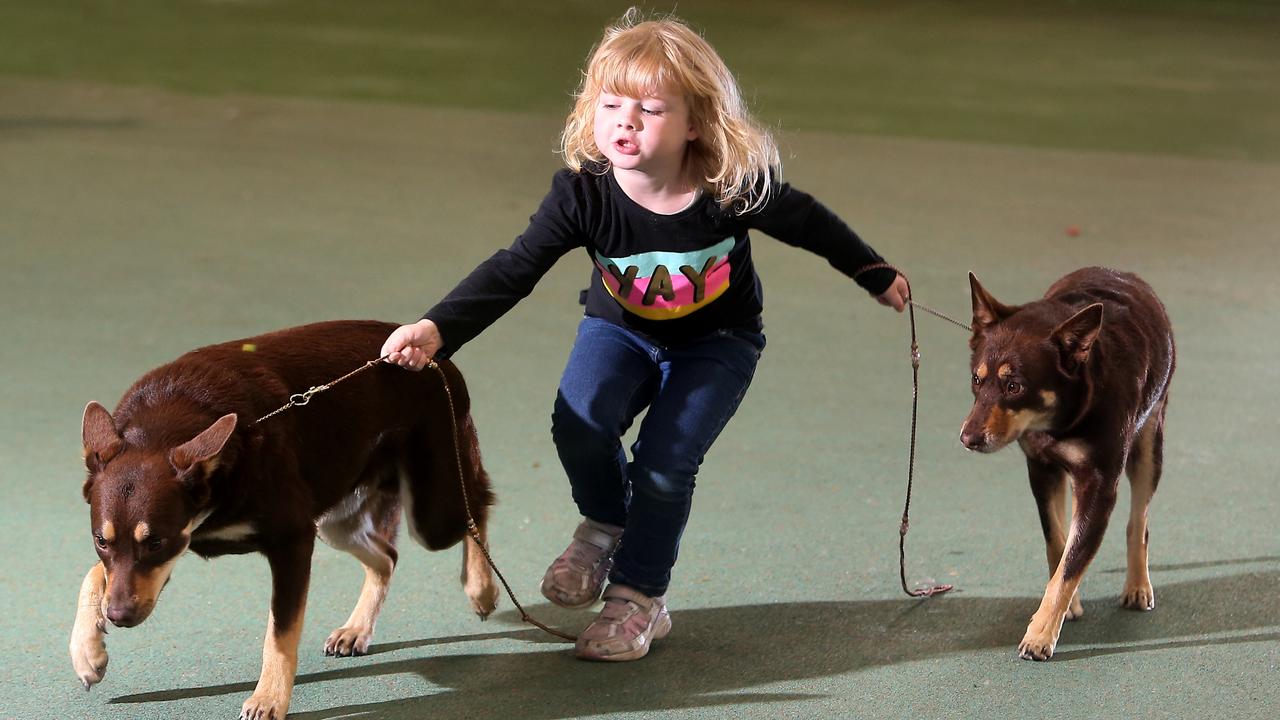It’s much more than Kelpies and Border Collies — working dogs come in all shapes and sizes, and a Victorian club celebrates them all.
There’s not a sheep or cow in sight.
Yet here, at the Working Dog Club of Victoria’s annual championship — at Dogs Victoria’s KCC Park in Skye, in southeast Melbourne — canines are battling it out to be top working dog.
“These are all cattle or sheep dogs bred for herding, mustering or flock protection,” explains club president Chris Moore, as a French Briard enters the show ring.
“Today’s event is all about conformation, a kind of beauty contest.
“Every dog has a standard, just like stud horses or cows, which is blueprint of what that dog should be — height, colour, eyes, length of tail, quality of coat.
“The judge then looks for the best of the best.”
While The Weekly Times’ readers think of Kelpies, stumpy tails, cattle dogs or Border Collies as the sum total of most working dogs, there are actually 36 breeds in the group.
Chris, who has been club president for a decade and is also a board member of Dogs Victoria’s management committee, says some of the little known working dogs include Komondor, Puli, Pumi, Swedish Vallhund (which herds reindeer), and even the pint-sized Corgi (traditionally working cattle in Wales).
“There are two Bergamasco dogs in Victoria and one Icelandic Sheepdog in Australia, which comes to most of our working dog shows,” he says.

Chris and his wife, Sue, have bred Old English sheepdogs for 45 years. His six-year-old dog Roger (which has the show name Barkshires Captain America) is Australia’s top dog, with the most points on the ladder board nationwide.
“I’m passionate about the breed and take my dogs to about 50 shows a year. I’ve been showing since I was 13,” says the 60-year-old, who adds it takes three hours a week to brush each of his 10 competing Sheepdogs.
“My Mum bred them and now my son also breeds them and is a judge, so we have three generations involved in the breed in the Moore family.”
For more than three decades Chris has also been a judge, now attending 25 shows a year around Australia and overseas as an all-breeds judge.
There are about 180 working dogs entered into the working dog show at KCC Park, or the State Dog Centre — the largest member-owned dog facility in the world, with amenities spread across 30ha and with more than 280 affiliated clubs.
While crossbreeds can take part in activities, this championship is all about the purebreds.
The show runs all day, with owners taking their pooch through their paces for about two minutes.
The judge is Sue Impey, flown in from South Africa especially for this event. She is capable of examining 40 dogs an hour — or 250 dogs a day — looking at the canine from all angles, its gait, even checking teeth, eyes and testicles.

Dogs enter the arena in alphabetical order, starting with Australian Cattle Dogs and ending with White Swiss Shepherds.
In each breed, male pups lead the charge, followed by juniors, intermediate and open, with a neuter category introduced in recent years.
Once the males classes have finished, then the bitches take their turn.
And so on it goes, with the best chosen in each breed, in all age groups, in each gender, until by day’s end a “best in show” is awarded from all winners.
Emma Astbury, 39, is one of the newcomers to the show ring, having shown her four Maremmas for about 18 months.
She says she got the guardian dogs to protect her flock of 100 Dorper sheep, as well as 20 chooks, on her Pearcedale farm. The Maremmas also act as companion dogs to her autistic son, and also protect native animals rescued in her wildlife protection shelter.
“I got the Maremmas because I was sick of dead lambs in the paddock,” says Emma, who works by day as an undertaker for funeral homes.
“My Mum shows cattle dogs and because Maremmas aren’t usually found in the show ring I decided to give it a go, just because they are brilliant, I wanted to show their skills off.
“Maremmas are problem-solvers. They assess the situation, sit back, watch and then act.”

In contrast to Emma is 89-year-old Kevin Evans, given a celebratory cake at the championship for being a member of the Collie Club of Victoria for 70 years.
“I started showing Collies in 1949 because a friend showed their Chows and it sounded like fun,” Kevin says.
“I won 35 championships and in 1957 was even pictured in The Weekly Times next to a ship after I imported one of my dogs from the UK.”
Even though Kevin retired in 2000, he never misses an event. His daughter Cathryn Hoare now also shows her Bearded Collies, including supreme champion Oliver.
Chris says people show their dogs not for the money, but for honour.
“People come for the social aspect,” he says.
“Of course, like with sheep or cattle, buyers look for quality dogs. So if a judge has awarded your pedigree dog, buyers know offspring has been looked after.”
Chris says winning does not mean breeders charge more for their pups (“some people charge a lot and don’t even show”).
He says Dogs Victoria also has a strong compliance section, which carries out inspections of breeders.
“They regulate breeders and have a strong code of ethics and if someone breaches this, they are kicked out,” says Chris, whose Sheepdog pups are sold for $3500.
“We don’t want puppy farms as members. In the past we have discovered members who have had puppy farms and they have been suspended.”
Chris says even on the day of a show, strict rules are enforced.
“Sometimes people don’t keep their dogs under control and if there’s a dogfight it has to be investigated on the day and if blood is drawn the responsible dog can’t show or do anything for six months,” he says. “That’s rare. We may get half a dozen aggressive dog incidents a year.”
And if the humans don’t play fair? “There’s a rep or an umpire on the day who makes sure rules are followed,” Chris says. “In the past there has been disputes. If someone plays up, they’re reported.”



How a Mount Bolton farmer lives without waste
A Mount Bolton woman who is committed to living with less impact is spruiking the philosophy of the four F’s: farming, foraging, fossicking and frugavoring.
Madonna & John Williamson share what title?
The Chase Australia’s Brydon Coverdale new quiz for The Weekly Times readers is here. Are you game to put your knowledge to the test?